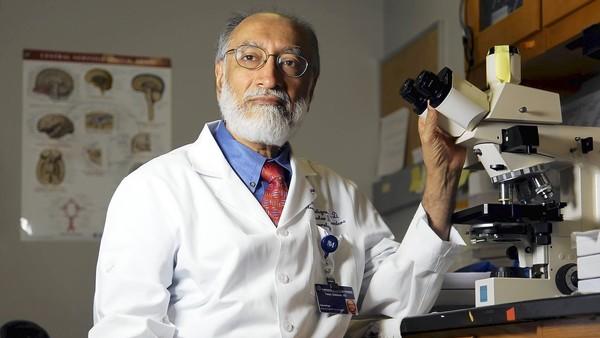Ohio area families discuss the devastation of watching a loved one disappear a little at a time thanks to ALS. amyotrophic lateral sclerosis affects 30,000 Americans, an estimated 800 in Ohio. (371 in Co.)
ALS is a cruel illness. Not only to its victims, but to their families. Just ask anyone who has witnessed its devastation or lived it.
“The experience of ALS can quickly make you realize what each of us takes for granted each day,” said Jill Leo, whose husband, Chris, died in March following a seven-year struggle with amyotrophic lateral sclerosis, also known as Lou Gehrig’s disease.
“Playing catch or soccer in the backyard with your son, taking a walk, a hand-written note, driving a car, mowing your lawn or dialing the phone to talk to a friend. These are just a few things we take for granted that most ALS patients cannot do after the disease progresses.”
The viral Ice Bucket Challenge that swept the globe during the late summer has helped raise awareness and, according to the ALS Association, more than $115 million since July 29.
Those familiar with the disease are grateful for the wave of attention, but the battle against it continues.
Vicki Evans has watched her husband, Tim, deteriorate over 16 years. Diagnosed with ALS in 1998, he has been fighting the disease since, and it has taken its toll.
“Every case is different,” she said. “In 2009, he fell and hyper-extended his knee. His ALS was making it more and more difficult for him to walk. He started using a walker, then gradually, he started losing the use of his hands.”
Evans is now in a wheelchair and no longer has the use of his hands.
“You cannot dwell on your situation,” said Evans, 58, who had to go on disability. As an estimator for the Knoch Corp., he was able to work at home part-time for awhile after his diagnosis, but he said he was laid off in 2005 along with others when the economy took a downward turn. The Knoch Corp. sponsors the Tim Evans AGC (Associated General Contractors) Scholarship each year in his honor.
“Every once in a while, I throw myself a pity party, but I have to go on. I think having a positive attitude is one of the reasons I continue to go on. Not being able to do the daily chores anymore or do what I used to do does get to you.”
Once Canton’s safety director, Paul Bair was diagnosed with ALS earlier this year.
“He is weak,” said his wife, Darlene. “He is in no pain, but he coughs a lot because his lungs and diaphragm are weakened. He is on several machines to keep his lungs clear, but his ALS is progressing quickly.”

 Researchers at Northwestern University say they have discovered a common cause behind the mysterious and deadly affliction of amyotrophic lateral sclerosis, or Lou Gehrig's disease, that could open the door to an effective treatment.
Researchers at Northwestern University say they have discovered a common cause behind the mysterious and deadly affliction of amyotrophic lateral sclerosis, or Lou Gehrig's disease, that could open the door to an effective treatment. 





